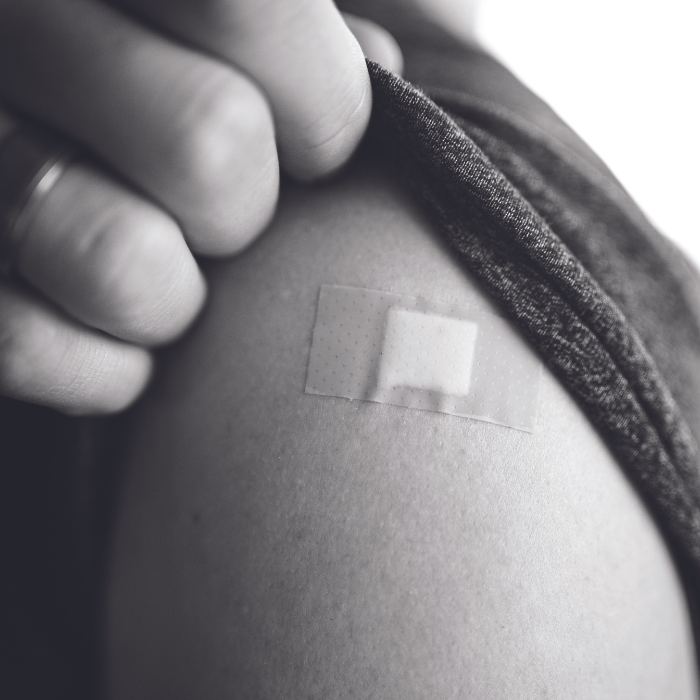
This has to be one of the best “healthy food” hacks I’ve tried: “Get your kids sprouting” which in itself is hugely satisfying and ridiculously easy to do. Kids love it. But even better, your little tribe will be eager to eat the fruits of their efforts, which range from fabulously crunchy, to savoury sweet, some a little spicy that pack a mean punch of vitamins, and some simply fascinating to watch. Raelle Connolly, expert sprouter from “Wright Sprouts”, tells us the (remarkably simple) secrets to success.
How to sprout
All you need is a glass jar with a mesh lid, some viable seed (untreated), fresh water and a kitchen bench.
Now you are ready to start.
How exciting that in just three days from now, you will be eating your own sprouts.
There are only 3 Basic Rules of Sprouting
- Wash, then soak the seeds for the required time. Overnight is best.
- Next day, rinse thoroughly until water runs clear and drain well, repeat twice a day.
- When the little tails appear and are 3-5mm long, it’s time to harvest. Store your dry sprouts in a clean/sealed container in the fridge.
Amazingly, that’s all there is to it! The sprouts themselves will do the rest of the work, and turn into the most nutritious food on this planet.
All that is left is for you to turn them into a delicious meal and eat them. How easy can it get?
Add your seeds to the jar

Soak your seeds over night
Rinse and drain your seeds twice a day for 3-5 days, or until fully sprouted and ready to eat
Dry and store in the fridge in an airtight container.
Watch a video of how to sprout here.
What nutrients and vitamins are in sprouts, and how many should we eat each day?
Sprouts are nature’s multi-vitamin, and most contain iron, calcium, magnesium, phosphorus, potassium and high levels of proteins, as well as vitamins A, B and C. Sprouts digest very quickly and produce energy, which is available within 15 minutes of eating. Eating a handful of a variety of sprouts a day will certainly help keep the doctor away, as they say.
Why do we need to soak the seeds? And would it still work if I didn’t?
No, the seeds need to be activated in water to release the phytates and enzyme inhibitors (nasties) that hinder digestion. After soaking, these are washed away, allowing the magic to happen during germination. At the germination stage, all the latent micro and macronutrients double in volume in 24 to 48 hours. Check the instructions on your sprouting guide for the ideal numbers of days for eating your sprouts, as this is when they are at their best. During any future growing of the sprouts (over and above this time), the nutrients start to get used up, so the best time to eat them is generally 3-5 days old, or as recommended.
Which seeds are the most popular and the healthiest?
The most popular are pea and bean sprouts, mung bean and chickpea sprouts, as well as lentils and blue pea. The chickpea and lentils are good for balancing blood sugars.
Broccoli is the most beneficial of all the sprouts and, although it’s a bit spicy, most kids love it. As a small sprout, it’s easy to hide in wraps and sandwiches if you’re looking to add a few sneaky nutrients. A small amount goes a long way.
Alfalfa is great for lowering cholesterol as it actually aids the body to rip the cholesterol out of the arteries and into the bloodstream where, with the aid of the fibre, helps to flush it out of the bowel (not that the kids need this, but the parents might!). Alfalfa and peanut butter is a favourite with kids.
Troubleshooting
What if my sprouts start to smell?
They may need to be rinsed very well and drained properly. If the smell persists, then they may have gone off due to humidity, so chuck them out, clean the jar and start again.
What if they don’t sprout?
Then the seed wasn’t viable, as it may have been heat treated or fumigated, which will kill the viability of the seed. Organic seed is not heat treated or fumigated, so is the best seed to buy for sprouting.
Can I over water them?
Yes! You should only water when the seeds are looking dry, and this should happen at intervals of 6-8 hours. If the seed is always wet, it can rot.
Would you like to read more about sprouting?
Extra resources FREE to download
For your FREE 10-page booklet about sprouting
Thanks to our friends at Wright Sprouts for supplying all the good stuff on how to make these truly nutritious little jewels of nature. We’re hooked!











